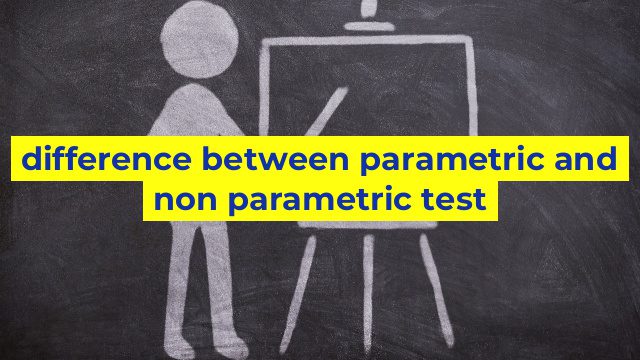The Difference between Parametric and Non-Parametric Test: An SEO Guide
Introduction
Statistical analysis is an essential tool in data analytics. It helps in understanding and interpreting the data more effectively. Statistical tests are of two types – parametric and non-parametric tests. Both the tests are designed to make inferences about populations based on samples. In this article, we will discuss the difference between parametric and non-parametric tests.
Parametric Test Definition and Advantages
Parametric tests are statistical tests that are based on specific assumptions about the population’s underlying distribution. It means that the data must follow a normal distribution, and the variance of the two groups must be equal. Parametric tests are more reliable and provide more precise results when the assumptions of the test are met. These tests are also more powerful, meaning they have a higher chance of detecting a statistically significant difference between two groups.
Parametric Test Examples
Some common examples of parametric tests include t-test, ANOVA, and regression analysis. T-test is used to compare the means of two groups, ANOVA is used to compare the means of three or more groups, and regression analysis is used to analyze the relationship between two or more variables.
Non-Parametric Test Definition and Advantages
Non-parametric tests are statistical tests that are not based on specific assumptions about the population’s underlying distribution. These tests are less restrictive as compared to parametric tests and can be used when the assumptions of the parametric tests are not met. Non-parametric tests are also called distribution-free tests because they can be used for any distribution. These tests are less powerful, but they are more robust to outliers and non-normality.
Non-Parametric Test Examples
Some common examples of non-parametric tests include Mann-Whitney U-test, Wilcoxon signed-rank test, and Kruskal-Wallis test. Mann-Whitney U-test is used to compare the medians of two groups, the Wilcoxon signed-rank test is used to compare two related samples, and the Kruskal-Wallis test is used to compare the medians of three or more groups.
Conclusion
In conclusion, the main difference between parametric and non-parametric tests is that parametric tests are based on specific assumptions about the population’s underlying distribution, while non-parametric tests are not. While parametric tests are more powerful and precise, they are also more restrictive. Non-parametric tests are less powerful but more robust to outliers and non-normality. The choice between parametric and non-parametric tests depends on the type of data and the assumptions of the test.
Table difference between parametric and non parametric test
| Parameter | Parametric Test | Non-Parametric Test |
|---|---|---|
| Assumptions | Test assumptions require a normal distribution and homogeneity of variance | No assumptions about the distribution of the population or sample |
| Nature | Used to test hypotheses about population parameters that describe the distribution of data | Used to test hypotheses about differences in medians or distributions |
| Types | t-tests, ANOVA, regression analysis | Mann-Whitney U test, Wilcoxon signed rank test, Kruskal-Wallis test |
| Data Type | Interval or ratio scale | Ordinal, nominal, or dichotomous scale |
| Power | More power and higher chance of detecting significant differences | Less power than parametric tests |
| Application | Used for larger datasets | Used for smaller datasets or when assumptions for parametric tests are violated |
